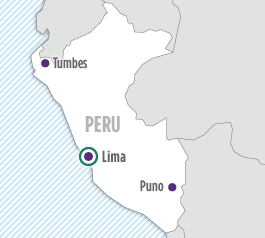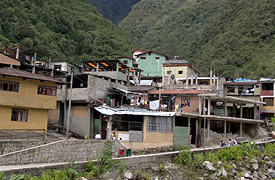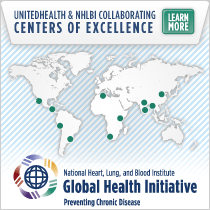Peru - Universidad Peruana Cayetano Heredia

Center of Excellence
CRONICAS
Universidad Peruana Cayetano Heredia
Lima, Peru
Principal Investigator: Jaime Miranda, M.D., Ph.D.
CRONICAS Website
Center of Excellence Activity Sites
- Central Coastal Peru (Lima)
- North Coastal Peru (Tumbes)
- South Eastern Andes Peru (Puno)
Developed Country Partner
Johns Hopkins University, Bloomberg School of Public Health, Baltimore, Maryland, USA
Principal Investigator: Robert Gilman, M.D.
Background
Noncommunicable diseases kill people at economically and socially productive ages, and exert their greatest effects in the developing world: 80 percent of chronic disease deaths occur in low- and middle-income countries. In 2000, in the Latin American and Caribbean regions the leading cause of mortality was cardiovascular disease (CVD), which accounted for 31 percent of all deaths. In Peru, a low- and middle-income country, 42 percent of premature deaths were due to noncommunicable diseases.

In 1975, only 27 percent of people in the developing world lived in urban areas. By 2000, the proportion was 40 percent, and projections suggest that by 2030 the developing world will be 56 percent urban. Urbanization — heavily influenced by migration — poses a considerable challenge for public health, especially in developing countries. Understanding the effects of urbanization is one of the grand challenges concerning chronic noncommunicable diseases.
Globally, approximately 50 percent of all households and 90 percent of rural households use solid fuels as the main domestic source of energy. Use of biomass fuels is the most significant source of indoor air pollution worldwide. Biomass fuel exposure is currently considered to be the most important risk factor for COPD (chronic obstructive pulmonary disease) after cigarette smoking. In Peru, a large majority of rural households continue to use biomass fuels for cooking and home heating. Individuals living in rural villages are particularly vulnerable to exposure to hazardous levels of indoor air pollution from biomass fuel combustion because of inadequate ventilation.
Objectives

The primary objective is to build a long-term sustainable research infrastructure in Peru, with a focus on clinical research in noncommunicable chronic cardiovascular and pulmonary diseases.
Research Activities
- Assess the cardiovascular risk factors profile in Lima (very urban) and Tumbes (less urban). Also assess disease progression, from a baseline disease-free status to hypertension and diabetes.
- Examine the prevalence of COPD in two Peruvian populations: one that burns solid fuels for energy and one that uses electricity or kerosene. Characterize the longitudinal rate of decline in lung function over a four-year period in a Peruvian population that predominately burns solid fuels for energy.
Training
Young scientists who are focused on the study of chronic cardiovascular and pulmonary diseases will be trained. Training will focus on the entire cycle of research, including study design, grant writing, management of research projects, analysis of data, and manuscript preparation and publication of data. Mentoring, seminars and journal clubs, training in human subject protection, and mentoring by experts in their fields will help young investigators as they become involved with the research activities.
Other Partner Organizations
A.B. PRISMA
Lima, Peru
Principal Investigator: Mirko Zimic, Ph.D., M.Sc., M.H.S.
Funding
The Center of Excellence in Peru receives funding from the NHLBI.
Last Updated: August 27, 2012

















 (9 MB)
(9 MB)
 Twitter
Twitter
 Facebook
Facebook YouTube
YouTube